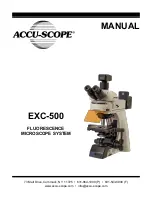
TMPM5200-2
5-53
■
Principles
Kelv
copy (KFM) is a special technique used to observe the
between a cantilever and the specimen using an AC-mode atomic force microscope
(AFM
mini
If U is the potential difference between a can
of SKPM operation
in Force Micros
surface-potential image of a specimen by detecting the electrostatic force generated
) and controlling the bias potential of the specimen so that the electrostatic force is
mized.
tilever and a specimen, the electrostatic
force generated between them is given by the following equation:
z
∂
2
where, z is the distance between the cantilever and the specimen, and C is the
gular frequency
ω
,
supe
following equation:
t
V
V
V
AC
DC
t
C
U
F
∂
⋅
⋅
−
=
2
1
electrostatic capacitance. An AC voltage with amplitude V
AC
and an
rimposed on a DC voltage V
DC,
is given by the
ω
sin
⋅
+
=
This superposed voltage is applied between the cantilever and the specimen. If the
, the potential difference U
t
is :
t
V
q
V
q
V
U
AC
DC
t
t
ω
φ
contact potential difference is
∆
φ
/q
∗
φ
sin
/
/
⋅
+
∆
−
∆
−
=
From the above equation, the electrostatic force F is given as follows:
(
)
z
AC
DC
∂
C
t
V
q
V
F
∂
⋅
⋅
+
∆
−
⋅
−
=
2
sin
/
1
ω
φ
2
This equation can be expanded as follows:
(
)
(
)
t
V
z
AC
ω
2
cos
4
2
⋅
⋅
∂
⋅
+
C
t
V
q
V
z
C
z
C
V
q
V
F
AC
DC
AC
DC
ω
φ
φ
1
sin
/
2
1
/
2
1
2
2
∂
⋅
⋅
∆
−
⋅
∂
∂
−
∂
∂
⋅
⎥⎦
⎤
⎢⎣
⎡
+
∆
−
⋅
−
=
ular
frequencies
ω
and 2
ω
, as shown in equation (1). These components are detected as the
change of t e vibration amplitude (F: Force) of the cantilever and the characteristic
frequency (
The Electrostatic force F has both a static component and components at ang
h
z
F
∂
∂
: Z-component of the Force gradient). The
ω
component is removed using
In the case of Force, the
ω
component corresponds to
the Lock-in Amplifier.
(
)
V
q
V
C
⋅
∆
−
⋅
∂
/
φ
AC
DC
z
∂
, as shown in the second term of equation (1).
In the case of the Force gradient the
ω
component corresponds to
(
)
V
q
V
AC
DC
⋅
∆
−
⋅
/
φ
.
The specimen surface potential
is measured by controlling
DC
V
so that this value
becomes zero.
•
REFERENCE:
Hiroshi Yokoyama, et al., Journal of The Physical Society of Japan, 49, 281 (1994)
T. Hochwitz, et al., Journal of Vacuum Science Technology, B14, 457 (1996)
z
C
∂
∂
2
2
∗
∆
φ
(units: eV) is the Work Function Difference (WFD) and
∆
φ
/q(units: V) is the Contact Potential Difference(CPD).
(1)
















































